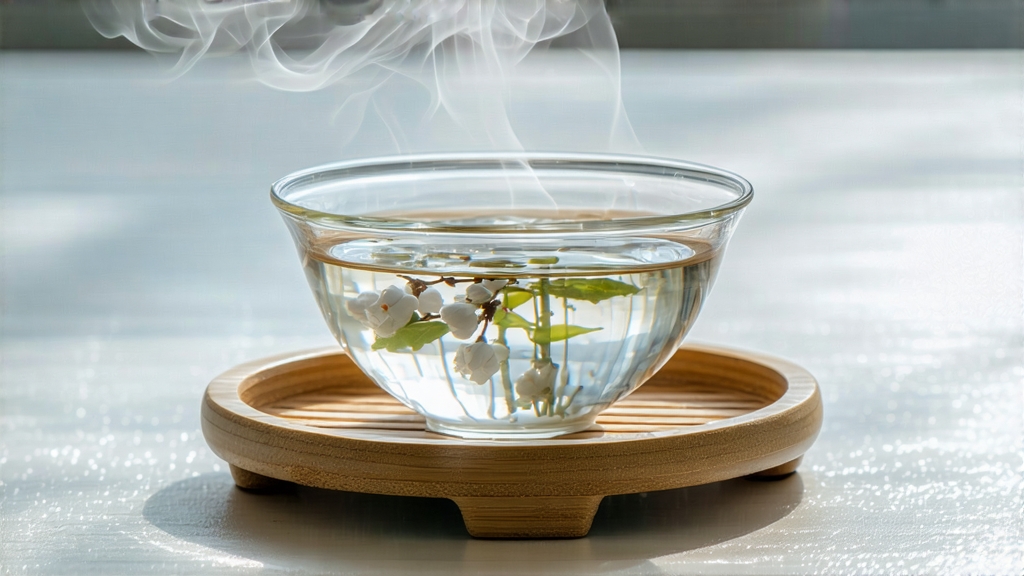
Among the six great families of Chinese tea, white tea is the least assertive yet the most haunting. Within that quiet clan, Bai Hao Yin Zhen—“Silver Needle”—reigns as the aristocrat. International drinkers often meet white tea through bagged blends labeled merely “white,” but to encounter a spring-picked, single-origin Yin Zhen from Fuding is to discover a different galaxy of fragrance, texture and aftertaste. This essay invites you into that galaxy, tracing the cultivar’s history, the farmer’s patient hand, and the taster’s contemplative cup.
-
Historical whispers
Song-dynasty emperor Huizong (1082-1135) praised “white buds among the tribute cakes” in his Treatise on Tea, yet the first unambiguous record of loose Yin Zhen appears in the Ming-era Gazetteer of Fuding (1541). Coastal Fujian produced so-called “small-white” tea bushes whose down-covered buds resisted the high heat of dragon-press cake making; locals simply sun-dried them. When the Qing court abolished compressed tribute tea in 1391, those fluffy buds floated free, becoming a luxury item shipped down the Min River to Canton merchants and, eventually, European apothecaries who valued their “cooling” reputation. By 1891 Fuding xianzhuang (county records) list Yin Zhen among the top three exports passing through the treaty port of Fuzhou, priced higher than Keemun black tea on the London dock. -
Terroir and cultivar
Authentic Yin Zhen is born inside a 270 km² micro-zone where the Wuyi Mountains descend toward the East China Sea. Red granitic soils, 1 600 mm annual rainfall and a 12 °C diurnal range in March force the Fuding Da Bai Hao cultivar to hoard amino acids while keeping polyphenols gentle. The bud’s trademark “three whites”—silver down, jade-green shaft, snow-white tip—only appear when the bush is allowed to winter at 200–500 m elevation, kissed by sea fog yet protected from salt wind by camphor and cinnamon forest. Attempts to transplant the cultivar to Yunnan or Assam yield larger buds but lose the cool-iodine lift and powdered-sugar finish that define the original. -
Plucking etiquette
The picking window opens when five consecutive days remain below 20 °C and relative humidity stays above 65 %. Experienced pickers break, not cut, the bud at the “fish-hook” joint just above the first true leaf, ensuring the tiny vegetative point remains intact. One kilogram of finished tea demands 30 000 buds, roughly four hours of nimble finger work by a seasoned woman who can pluck without touching her thumbnail to the down. Any pressure bruises cells, inviting premature oxidation that later translates into the dreaded “red neck” discoloration at the base of the needle. -
Withering: the art of doing almost nothing
Unlike green tea’s kill-green wok roast or black tea’s rolling rupture, Yin Zhen’s processing is a meditation on restraint. Fresh buds are first “winded” on shallow bamboo trays set 2 m above the ground of a sun-warmed corridor. For 36–48 hours they lose moisture while enzymatic oxidation proceeds at glacial speed; the master’s only tools are the shifting angle of reed blinds and the depth of the bud pile (never above 3 cm). At dusk the trays are stacked inside a curtained room where charcoal embers maintain 28 °C and 55 % humidity, coaxing a faint floral note that chemists identify as hotrienol and linalool oxide. No machine, no fan, no dehumidifier—just the slow dialogue between leaf and air. When the bud’s moisture drops to 10 %, a final 20-minute “foot-fire” at 40 °C fixes the aroma without caramelizing sugars, preserving the silvery hairs that give the tea its name. -
Grading and aging paradox
Export grades—Supreme, Special, First—are judged by bud length (1.5–2.2 cm), down density and liquor brightness. Yet within China connoisseurs prize a subtler metric: the potential to age. Stored at 25 °C and 50 % humidity in unse